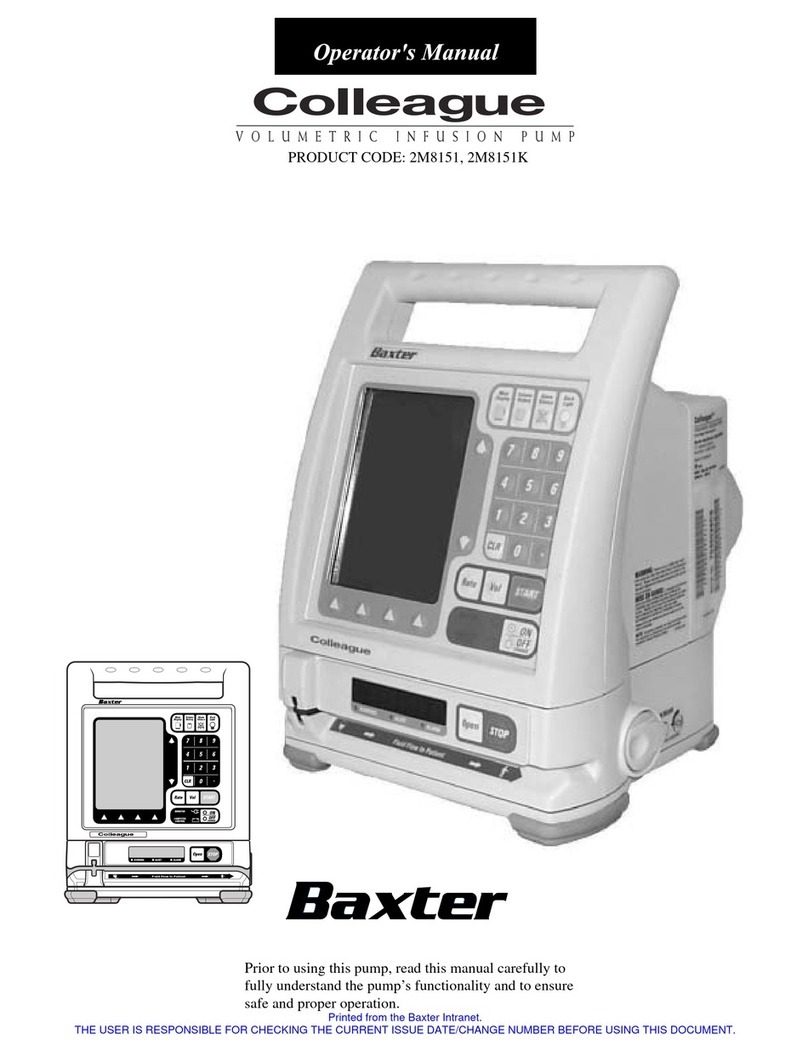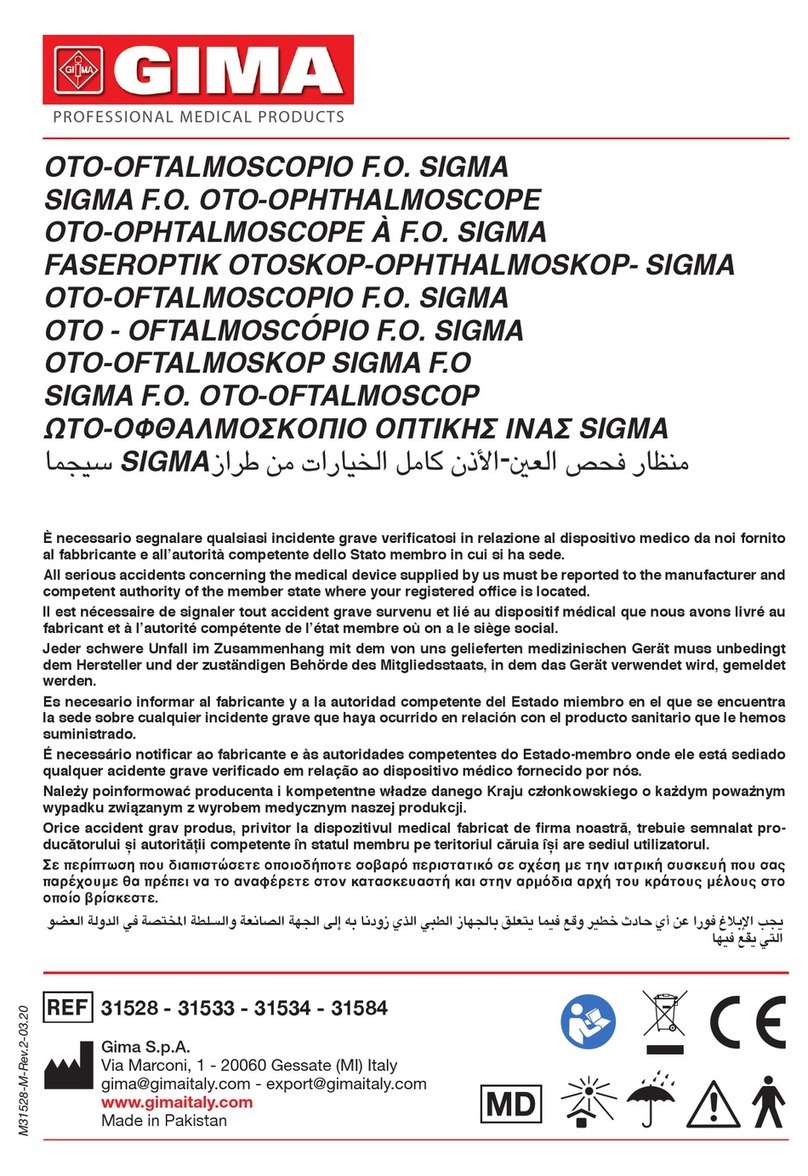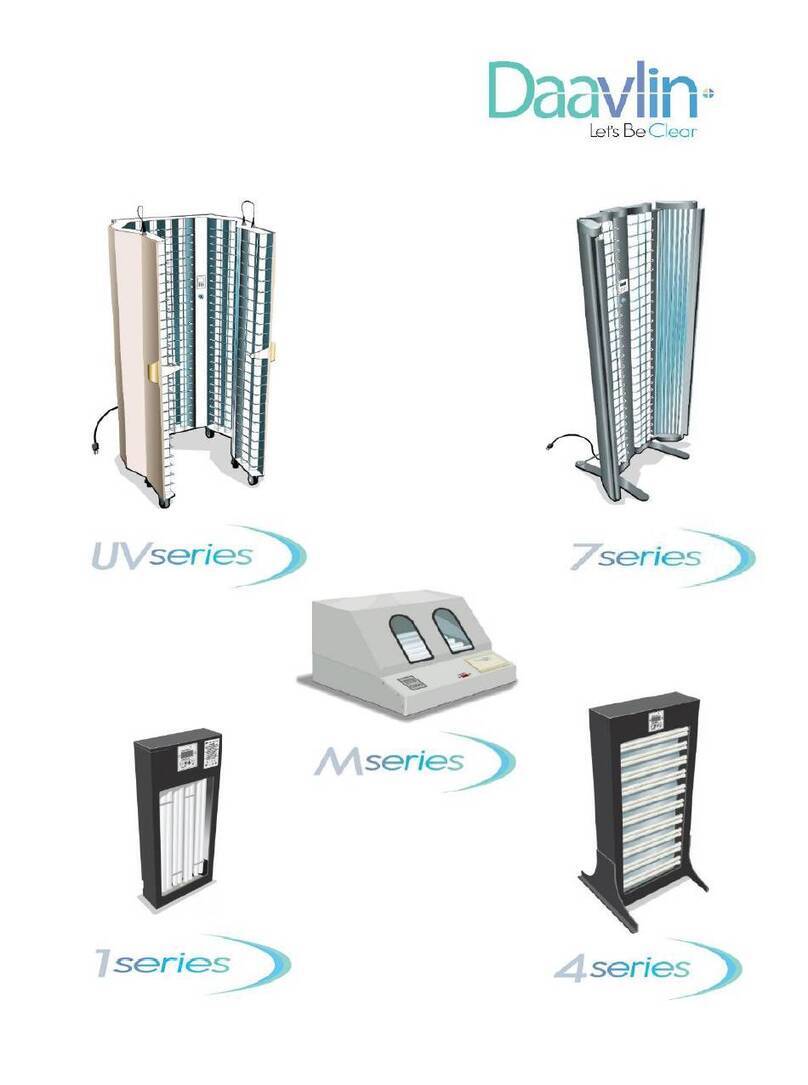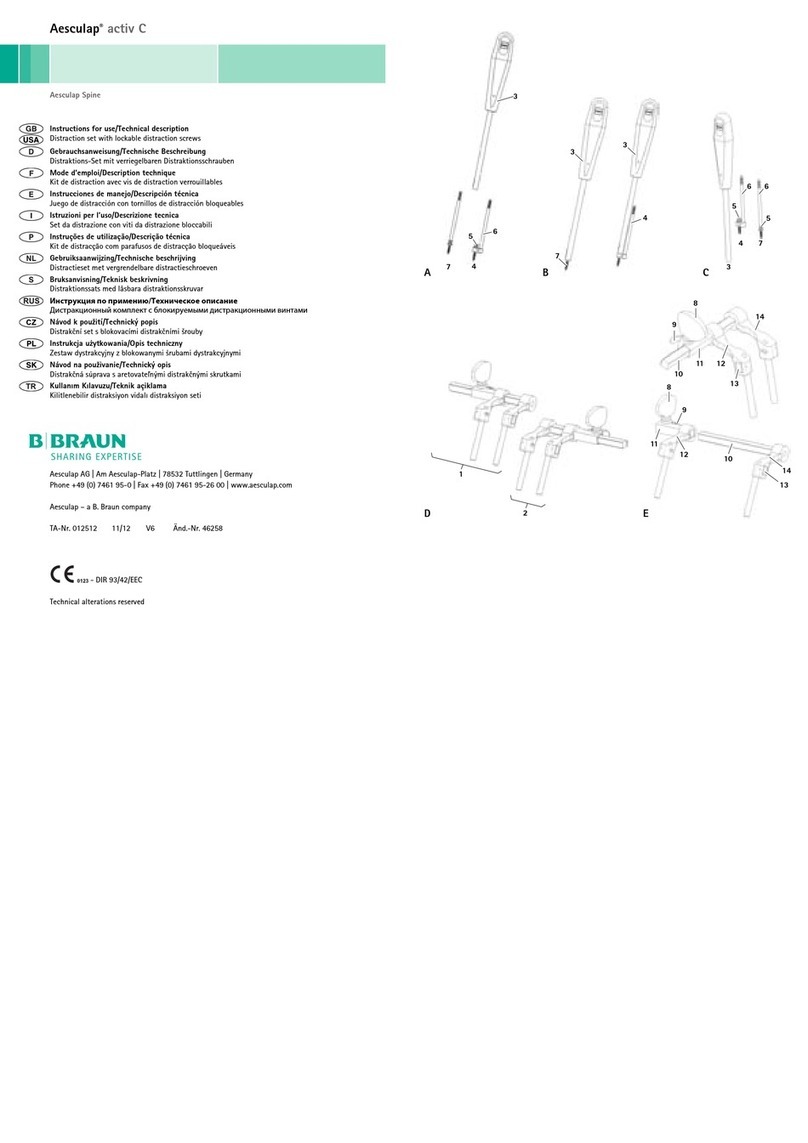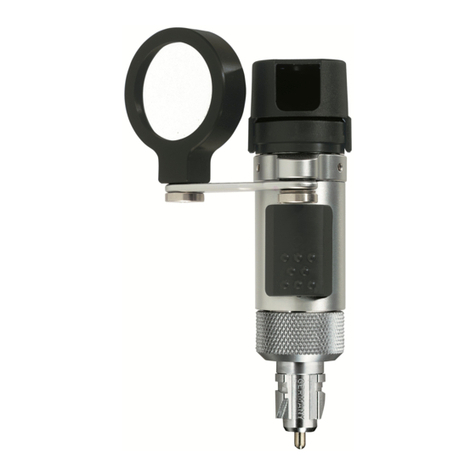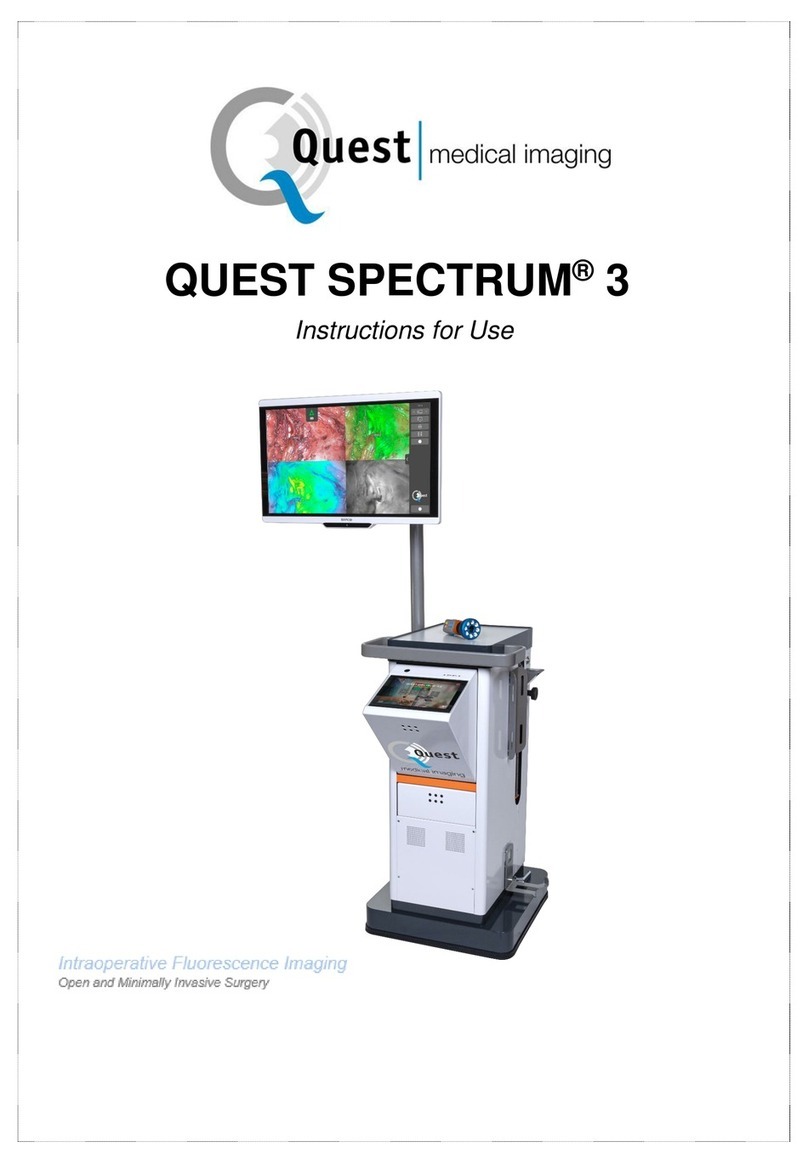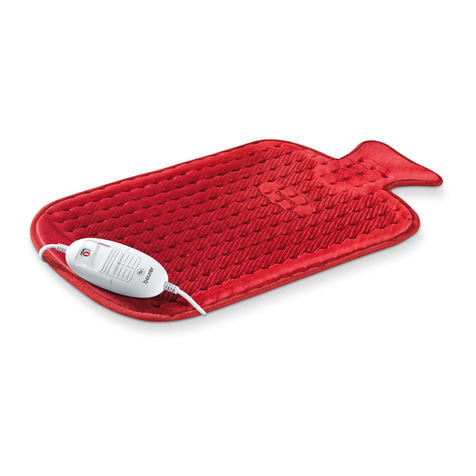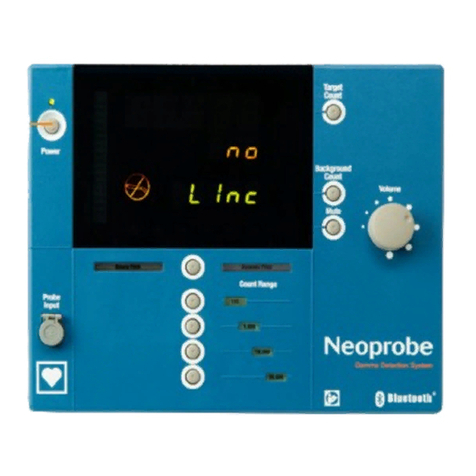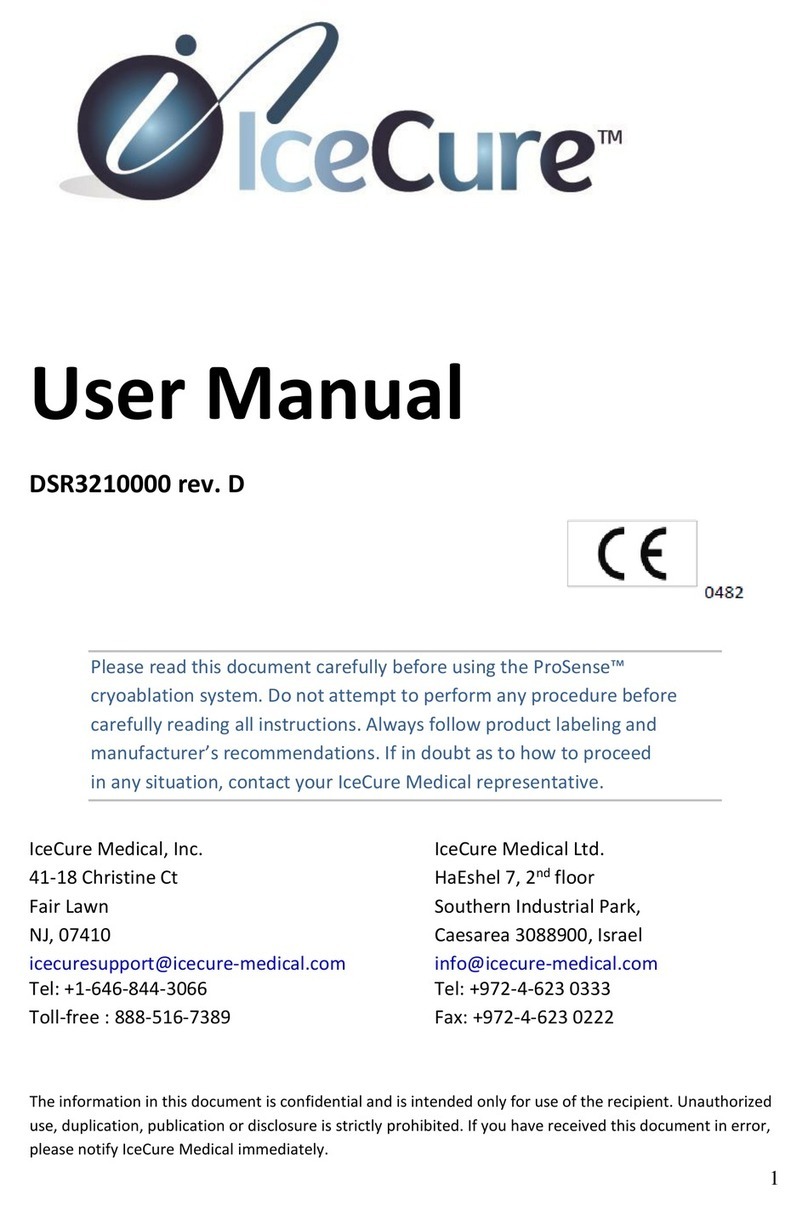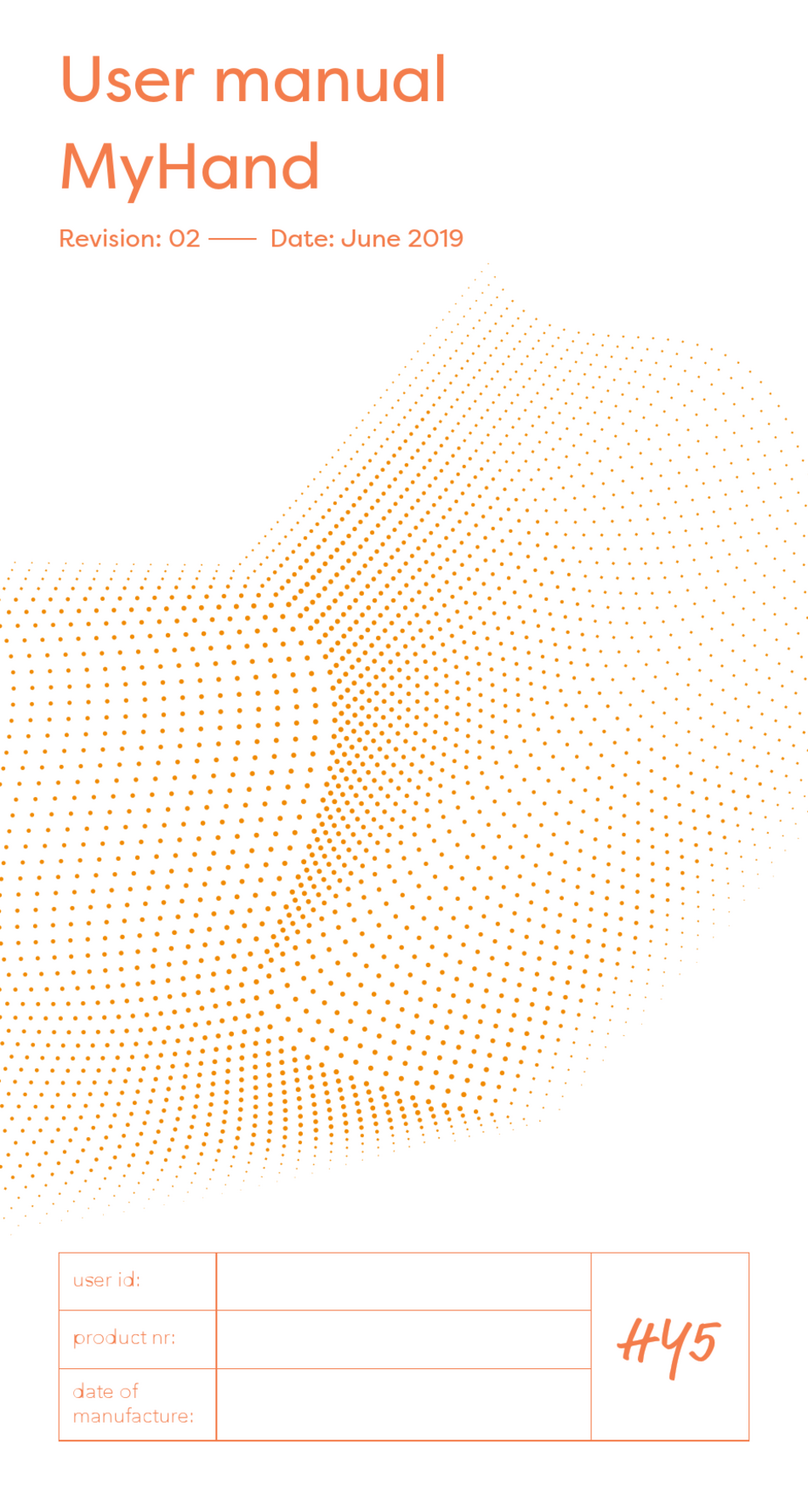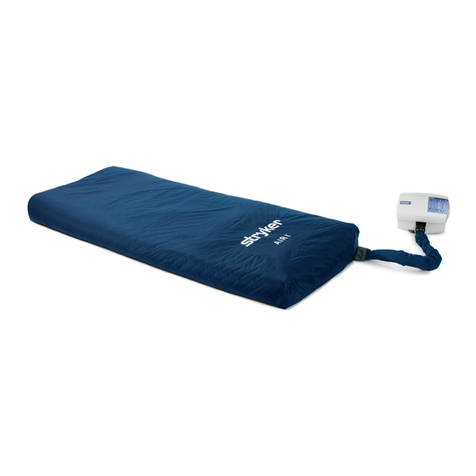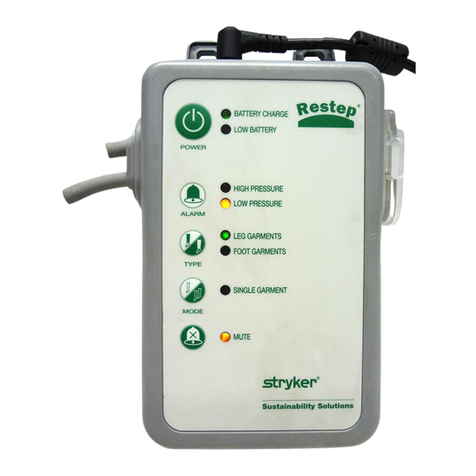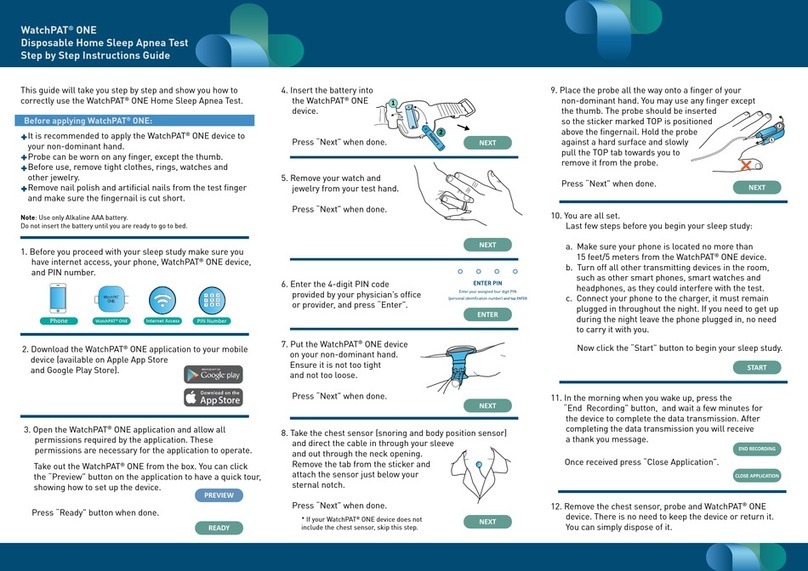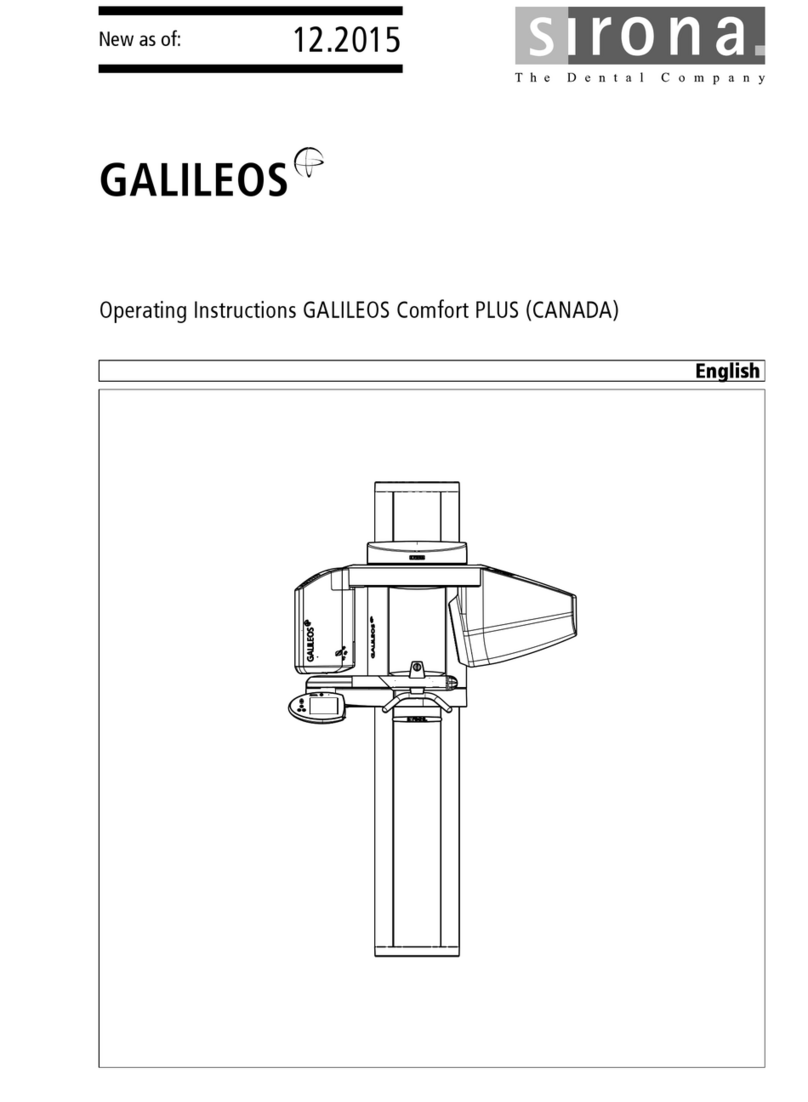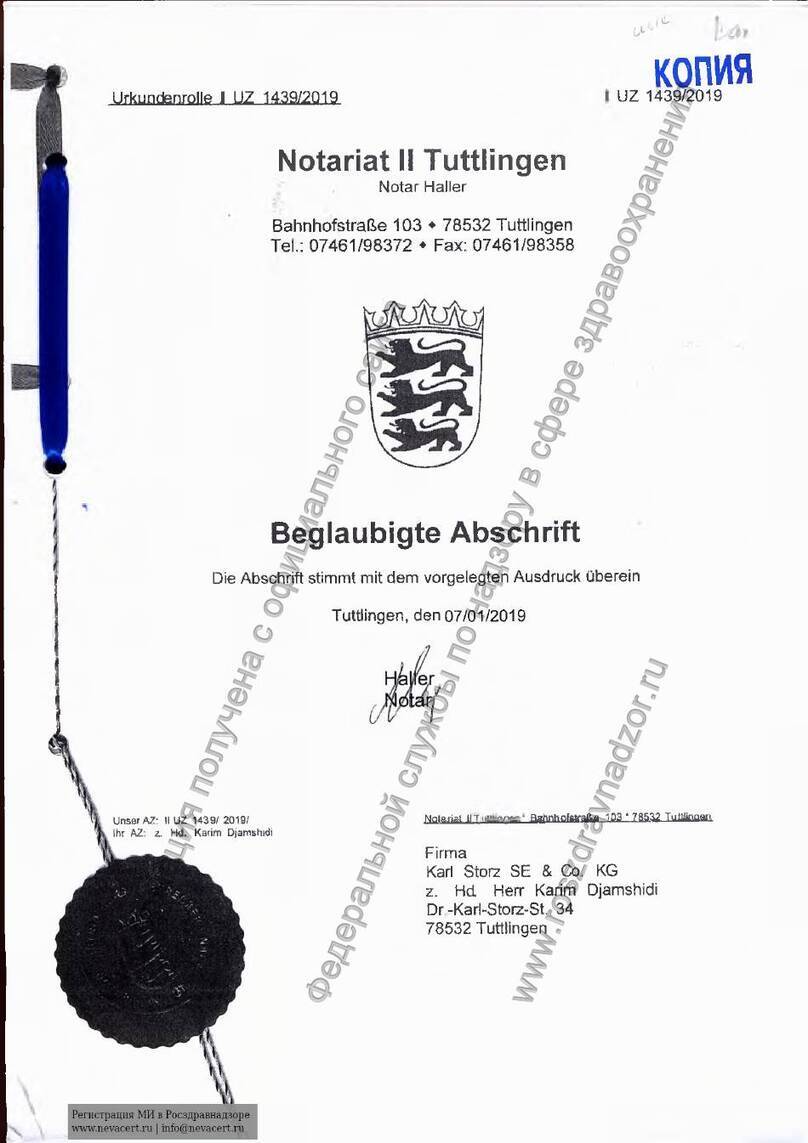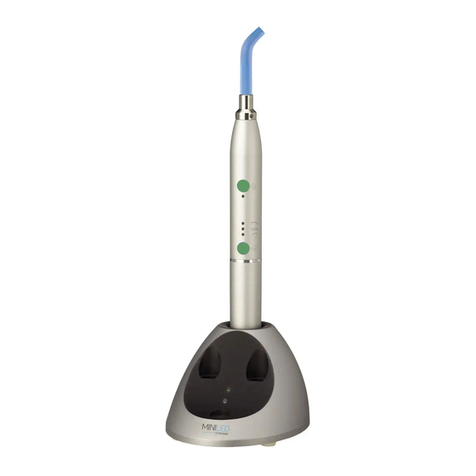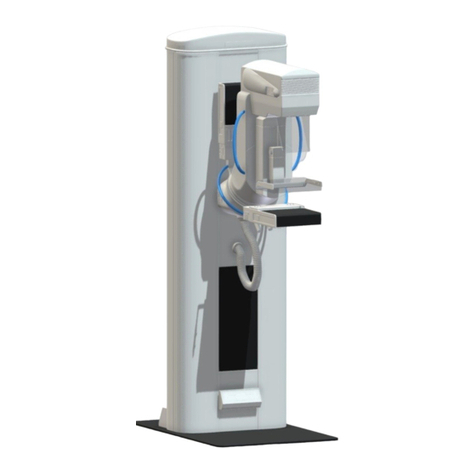Sri BioTester User manual

Page 1 of 16
BioTester
Version 3.02
Copyright, October, 2010
Stirling Rock International
Tel. 612 9482 4973
SRI

BioTester
Page 2 of 16
The manufacturer assumes no responsibility for the use of
this product in a medical environment or any incidents that
may occur from the use of this product.
The manufacturer reserves the right to update the hardware,
software and documentation at any time without notice.
Thank you to the Biomedical
Engineers, technicians and hospital
staff who have been involved
in this project.

Page 3 of 16
1 Contents
2 Quick Guide
3 Overview
4 Operation
5 ECG Simulation
6 Pace Operation
7 Stimulator Meter
8 Respiration Simulator
9 Sine Waveform
10 Triangle Waveform
11 Pulse Waveform
12 Options
13 Power Down
14 Low Battery
15 ECG Connectors
16 Specifications
CONTENTS

BioTester
Page 4 of 16
BioTester v3.02
Id Line
Then
ECG 60S Normal Press dn/up arrows to select the fn
Sinus left right arrow to change parameters
Pace 60S Normal
Sinus
Stim --.- ---mA
--.- ---mA
Resp 10 10.0R
Sine 50.0Hz S
Tri 50.0Hz S
Pulse 50.0Hz S
Options
To turn off the BioTester, press the left or Quit button until the arrows
are displayed under the leftmost text. Then press and hold the down
button until the display shows:
Power Off
Let go!!
2 Quick Guide

Page 5 of 16
The BioTester ECG simulator has been around for over 10 years,
and up to 50 units are in use in biomedical service centres and
hospitals around Sydney. The first versions were very time
consuming and difficult to make, and the focus on this improved
version has been to reduce the manufacturing cost so that the
BioTesters may be provided at a competitive cost. Other
improvements are crocodile clips for ECG connection (also easily
replaceable), sealed front panel improved and easier software,
reduced features set - only ECG simulation, Stimulator tester and
respiration, and improved accuracy.
The BioTester is a compact instrument, designed to simulate some
functions of a patient. The BioTester is designed for use by a wide
range of different medical personnel. The main applications are for
Biomedical Engineering during routine testing, service and repair
of equipment, by medical personnel during training and by hospital
and medical staff to ensure that functions of equipment is correct
and accurate . The BioTester's main features are:
ECG simulation any rate from 10BPM to 240BPM
Stimulator tester testing stimulators and TENS units
Respiration simulation 0.1R to 10.0R
To run the unit, install a PP3 size 9V battery into the battery
compartment. Now activate the unit by pressing the on/off switch
on the front of the unit. The display will activate and show
"BioTester v3.xx" where 3.xx is the software version. The second
line is the operator ID line (please see Section 12 for a detailed
explanation). This display and the display backlight will be on for 2
seconds, and then the current function will be displayed.
3 OVERVIEW
4 OPERATION

BioTester
Page 6 of 16
With the up arrows () under the leftmost region, press the down
arrow repeatedly until the display shows ECG at the top left. If
needed, first press the left or Quit button to set the arrows to the
leftmost item, and the press the down button until the ECG function is
shown..
In this mode, the ECG waveform parameters are displayed and can
be adjusted. The ECG waveform is output continuously. The ECG
type, rate and size are displayed on the LCD screen - these values
are configurable by the operator. The heart symbol will flash during
the QRS complex.
A pulse beep is available in the Options mode (refer Section 12),
which will make the BioTester beep twice during the QRS complex.
To change the ECG rate, press the right (or left) button until there are
three up arrows underneath the ECG rate. This indicates that the ECG
rate is selected and ready for adjustment. Press the up and down
arrows to adjust the ECG rate.
To change the ECG size, press the right (or left) button until one arrow
is displayed underneath the ECG size indicator. This indicates that the
ECG size is selected and ready for adjustment. The three ECG sizes
are low, medium and high.
To change the ECG waveform type, press the right (or left) button until
two arrows are shown on either side of the ECG waveform name. The
ECG waveform name is the furthest text to the right on the screen.
The typical waveform is Normal Sinus. Other waveforms are:
5 ECG SIMULATION

Page 7 of 16
Number Name Description
1Normal Sinus Normal rhythm for a healthy person
2Myocard Infarc Myocardial Infarction
3Angina Invert Angina Inverted T
4Angina Flat T Angina with a Flat T wave
5Angina Peak T Angina with a Peak T wave
6ST-depr InverT ST-depressed and Inverted T
7ST_elev T ST elevated T
8ST-depr T ST depressed T
9ST-JPt Depres St Junctional Point
10 AVBlock Type 3 Third-degreee AV block
11 AVBlock Type 2 Type2 second-degreee AV block
12 AVBlock Type 1 Type1 second-degreee AV block
13 AVBlock First degree AV block
14 IdioVent Rhythm Idiventricular rhythm
15 Ventric Fibril Ventricalar Fibrillation
16 Junction rhythm Junctional Rhythm
17 Atrial Fibril Atrial Fibrillation
18 Flutter Flutter
19 Prematur Atrial Premature Atrial

BioTester
Page 8 of 16
The Pace waveform is identical to the ECG waveform,
with the addition of a short 2ms pacemeaker spike at
the start of the ECG waveform to simulate a
pacemaker. This can also be heard when the pulse
beep is activated.
6 PACE OPERATION

Page 9 of 16
The stimulator tester will measure the output amplitude and
rate of nerve muscle stimulators and TENS machines. The
stimulator tester will measure to an amplitude range of 100mA
+-1mA and a rate of 8000ms +- 1ms (for a pulse width greater
than 200us). The load applied is 220R for Channel1 and 100R
for Channel2.
The stimulator should be connected across V6-LA for
Channel1 (with V6 being the positive) and RA-V2 for channel2
(with RA being the positive). Since the stimulator pulses are
measure through the ECG leads, this means that a small ECG
signal is also put into the stimulator which is very useful for
electrophysiological machines, such as the Micropace EPS.
The stimulator screen will automatically show the Stimulator
mA and period as shown below:
Stim 25.0mA 498ms
25.0mA 498ms
In addition a lightning symbol will illuminate for a short time
after each pulse. After 10seconds of no activity each channel
will revert to bars as shown below.
Stim --.-mA ---ms
--.-mA ---ms
To calibrate the mA reading, press the enter button. Then
adjust the reading on the right to the current value and press
Enter. Repeat this for channel2 and press Enter again to quit
to Stimulator mode. Quit may be pressed at any time to quit.
The calibration will only be saved if either channel value is
saved. The first number on the left is the ADC value, and the
second number is the current cal value. The third number is
the calibrated value to be adjusted.
7 STIMULATOR METER

BioTester
Page 10 of 16
The respiration function changes the resistance across
the RArm and LArm connectors to simulate an expiring
and inspiring chest. A pair of lung symbols are
displayed on the screen during inspiration (when the
resistance is increasing). The waveform changes
linearly with time, and the respiration will be displayed
as a triangle wave on a patient monitor.
In this mode, the Respiration waveform parameters are
displayed and can be adjusted. The Respiration
waveform is output continuously. The respiration rate
and size are displayed on the LCD screen - these
values are configurable by the operator.
To change the respiration rate, press the right (or left)
button until there are three up arrows underneath the
respiration rate. This indicates that the respiration rate
is selected and ready for adjustment. Press the up and
down arrows to adjust the respiration rate to any value
from 2 to 120BPM.
To change the respiration amplitude, press the right (or
left) button until there are four up arrows underneath the
respiration amplitude. This indicates that the respiration
amplitude is selected and ready for adjustment. Press
the up and down arrows to adjust the respiration rate to
any value from 0.1R to 10.0R.
8 RESPIRATION SIMULATOR

Page 11 of 16
Press the down arrow repeatedly until the display
shows Sine at the top left. If needed, first press the left
or Quit button to set the arrows to the leftmost item, and
the press the down button until the Sine function is
shown. The Sine waveform is very similar to the ECG
waveform with the exception that the frequency is
display in Hz (or Hertz).
To change the frequency, press the right (or left) button
until there are four up arrows underneath the frequency.
This indicates that the frequency is selected and ready
for adjustment. Press the up and down arrows to adjust
the frequency to any value from 0.1Hz to 99.9Hz.
To change the amplitude, press the right (or left) button
until one arrow is displayed underneath the amplitude
indicator. This indicates that the amplitude is selected
and ready for adjustment. The three amplitude are low,
medium and high.
9 SINE WAVEFORM

BioTester
Page 12 of 16
Press the down arrow repeatedly until the display
shows Tri at the top left. If needed, first press the left or
Quit button to set the arrows to the leftmost item, and
the press the down button until the Tri function is
shown. The Tri waveform is very similar to the ECG
waveform with the exception that the frequency is
display in Hz (or Hertz).
To change the frequency, press the right (or left) button
until there are four up arrows underneath the frequency.
This indicates that the frequency is selected and ready
for adjustment. Press the up and down arrows to adjust
the frequency to any value from 0.1Hz to 99.9Hz.
To change the amplitude, press the right (or left) button
until one arrow is displayed underneath the amplitude
indicator. This indicates that the amplitude is selected
and ready for adjustment. The three amplitude are low,
medium and high.
10 TRIANGLE WAVEFORM

Page 13 of 16
Press the down arrow repeatedly until the display
shows Pulse at the top left. If needed, first press the left
or Quit button to set the arrows to the leftmost item, and
the press the down button until the Pulse function is
shown. The Pulse waveform is very similar to the ECG
waveform with the exception that the frequency is
display in Hz (or Hertz). The pulse waveform is a 200ms
pulse which is used to calibrate ECG recorder speeds.
To change the frequency, press the right (or left) button
until there are four up arrows underneath the frequency.
This indicates that the frequency is selected and ready
for adjustment. Press the up and down arrows to adjust
the frequency to any value from 0.1Hz to 99.9Hz.
To change the amplitude, press the right (or left) button
until one arrow is displayed underneath the amplitude
indicator. This indicates that the amplitude is selected
and ready for adjustment. The three amplitude are low,
medium and high.
11 PULSE WAVEFORM

BioTester
Page 14 of 16
Press the down arrow repeatedly until the display shows Options at the
top left. If needed, first press the left or Quit button to set the arrows to
the leftmost item, and the press the down button until the Options
function is shown. The options is a list of parameters adjustable by the
Operator. Press Enter to access the options list.
In each option, press Enter to access the option, Quit to quit, and up or
down to adjust the option value. The Enter button will save any adjusted
options.
To turn off the BioTester, press the left or Quit button until the arrows
are displayed under the leftmost text. Then press and hold the down
button until the display shows:
Power Off
Let go!!
The BioTester will also power off automatically after 4 minutes of no
action.
No Display Description
1ID Adjust the startup second line ID screen – 16 charac-
ters in total
2Low Battery Adjust the low battery setting, and view the current
battery voltage
3Auto Off Adjust the auto off time in minutes
4Backlight Adjust the backlight timer in seconds
5Pulse beep Adjust the ECG QRS pulse beep to OFF (0) or ON
(1)
6Default Set all options and calibrations to default values
13 POWER DOWN
12 OPTIONS

Page 15 of 16
The 9V battery voltage is continually monitored, and
when the battery voltage drops below the low battery
setting (refer to Section 12), the display will briefly show
Low battery and the current battery voltage. The battery
voltage is check once every minute, so the low battery
alarm will be persistent, but not on continuously. To turn
off the low battery alarm, set the Low Battery voltage to
a lower level in Options.
The ECG connectors are crocodile clips to ensure that
all different types of ECG connectors can be connected
to (from buttons to 2,3,4mm and 1/8”). These black
crocodile clips are connected to 2mm plugs which may
be removed from the BioTester.
If needed, other adaptors can be made and fitted to the
BioTester. Longer ECG connector cables can be made
to suit, for a small cost.
14 LOW BATTERY
15 ECG CONNECTORS

BioTester
Page 16 of 16
16 Specifications
Power Supply Internal 9V battery
Battery current 15mA typically, 70mA with backlight
Battery life 10 hours typically
ECG amplitude 1/2mV, 1mV or 2mV (+/-0.1mV) 0-5V
Waveforms ECG, Pacemaker,Sin,Triangle,Pulse,
Respiration 0.1to 10.0variation
from RArm to LArm
Stimulator
(2 channels) Reading from 2mA to 100mA
(+/-0.5mA accuracy)
Table of contents
Other Sri Medical Equipment manuals


